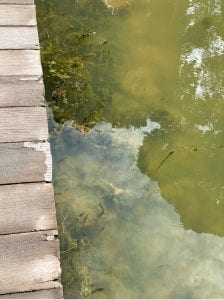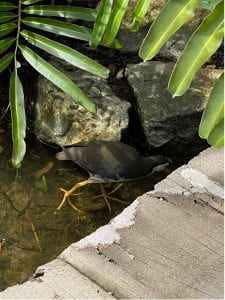On Saturday, 4th February, Prof Gretchen brought my GE4224 (Applied Biogeography) class to the Learning Forest Wetlands at Singapore Botanic Gardens (SBG) as one of our field sites.
Photo 1: Map of Singapore Botanic Gardens (Source: National Parks Board)
As we arrived at the venue itself, I felt indifferent. The weather was hot, there were not many animals in sight such as birds flying in harmony (maybe just one or two kingfishers if you pay really close attention), and neither were there ample signs of aquatic life such as fishes in the lakes.
Photo 2: Overview of Learning Forest Wetlands (Source: National Parks Board)
While it seemed like a pretty well constructed natural landscape, there was not much going on. As I was taking a moment to appreciate the view, Prof Gretchen posed a question, “So what is one word you would use to describe the landscape?” I remember responding to her question and using the word “undisturbed”. Prof Gretchen replied to me, “Are you sure this place is undisturbed?” and got me to take a closer look at the contents of the lake.
Photo 3: Hydrilla verticillata found in the lake (Source: Mikaail Indra)
Upon closer inspection, I did realize that the lake was filled with this invasive species, Hydrilla verticillata. It is considered one of the most invasive plant species in the world and can have significant impacts on aquatic ecosystems. Here are some impacts that this noxious weed has on our ecosystem:
- Competition with native aquatic plants: Hydrilla can outcompete native aquatic plant species for resources such as light, nutrients, and space.
- Habitat destruction: Hydrilla can cause dense mats on the surface of the water, which can block sunlight and reduce oxygen levels in the water, inadvertently killing fishes, and other aquatic species.
- Economic impact: Hydrilla can also have economic impacts by clogging irrigation systems and water intakes, reducing property values, and increasing costs for water treatment and management.
Photo 4: An example of a bird species hunting for food within the lake (Source: Mikaail Indra)
SBG is home to many rare and endangered plant species that the botanists have planted here for ex-situ conservation. Thus, human intervention is necessary to preserve and protect these species from extinction by providing suitable habitats, managing invasive species, and monitoring their population sizes. Moreover, as a horticultural center, it is also important to manage the gardens, and through the removal of Hydrilla, helps to ensure that these species remain healthy and attractive to visitors. From a wider perspective, SBG is a popular destination for tourists and locals alike, and their beauty and aesthetic value is important for their continued popularity. Human intervention is necessary to maintain the garden’s appearance, such as managing the landscape, planting seasonal flowers, and organizing events.
Photo 5: One of my favorite pictures of Singapore Botanic Gardens from a blog (Source: Ali Mohamad)
As I learnt more about the agenda by the authorities to preserve and protect the ecosystem of SBG, I also realized that letting nature take its own course is not always a good thing. Invasive species are dominative in nature, and if we were to allow the natural landscape to be left “undisturbed”, it can cause even more harm than good.
By: Mikaail Indra





Leave a Reply